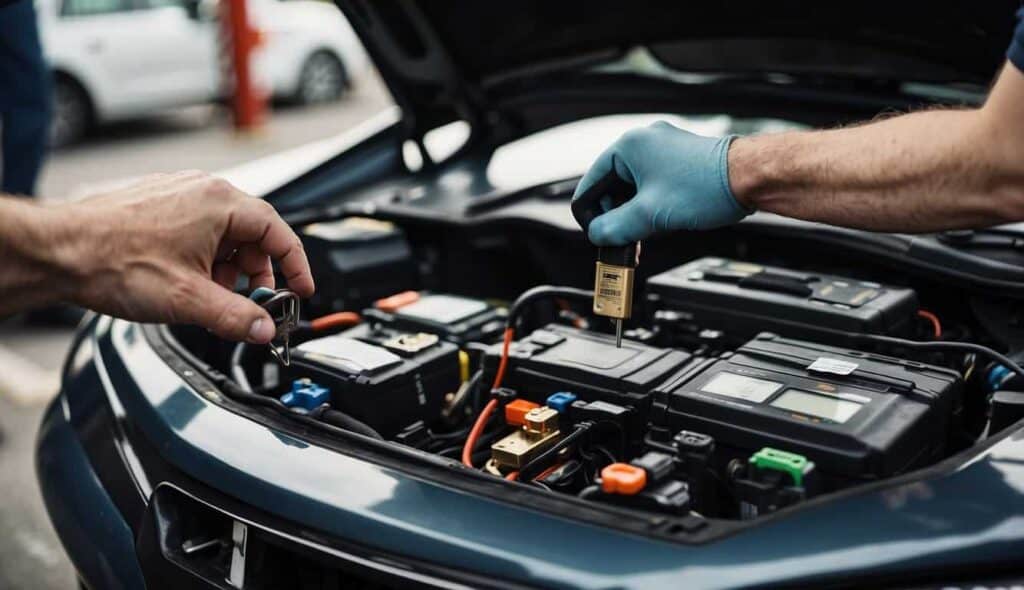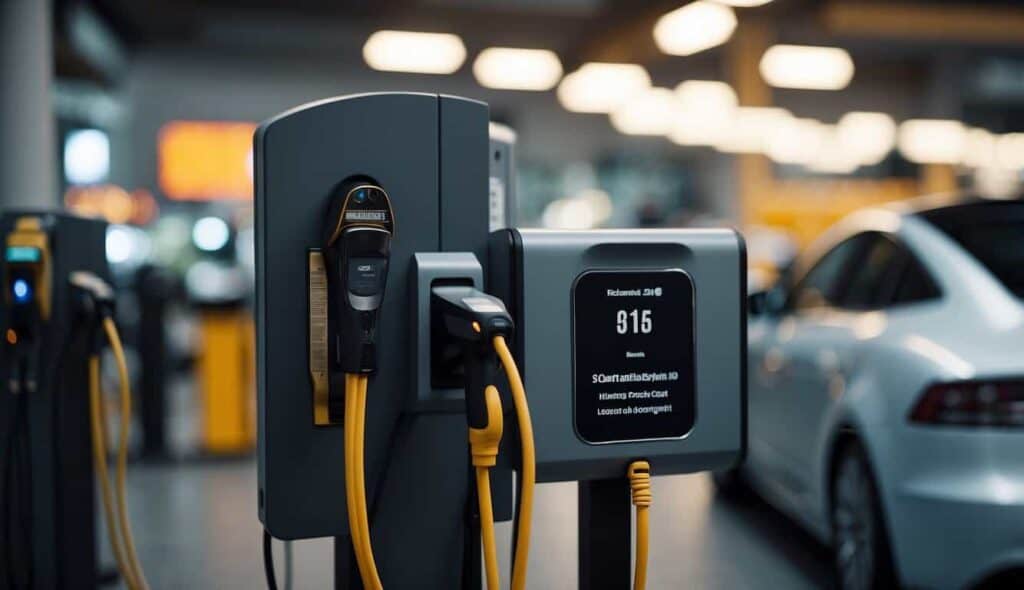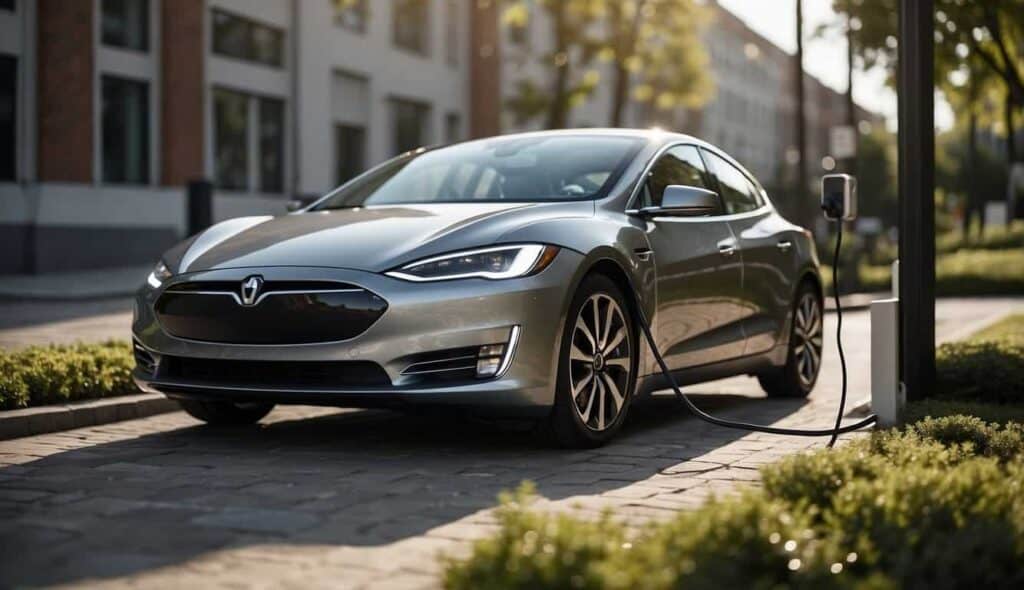Electric vehicles (EVs) are becoming increasingly popular as people look for more environmentally friendly travel methods. While EVs promise lower emissions and the potential for fuel savings, they also bring some hidden costs that can surprise new owners.
Understanding the hidden costs of owning an electric car is crucial before purchasing. These costs can significantly impact the overall affordability and convenience of an EV. Being aware of these hidden costs, from insurance premiums to maintenance expenses, can help potential buyers make better-informed decisions.
1) Battery Replacement Costs
Replacing an electric car battery can be a significant expense. Battery costs vary widely depending on the car model. For example, a Nissan Leaf battery replacement can range from $12,000 to $22,000 for a Tesla Model S. This high cost can shock many owners.
Battery replacements are not common, but they do happen. A survey by Recurrent found that 1.5% of EV drivers needed to replace their batteries. These replacements often cost between $5,000 and $20,000. Such costs can add to the financial burden of owning an electric vehicle.
Various factors can affect battery life, including the number of charging cycles, the climate, and how the car is driven. As batteries age, their capacity to hold a charge can decrease, leading to the need for a replacement sooner than expected.
Some manufacturers offer warranties on their batteries. These warranties can cover the replacement cost if the battery fails within a certain period. However, the owner is responsible for the full replacement cost once the warranty expires. This potential expense can make some people hesitant to switch to electric cars.
There are ways to extend battery life, such as keeping the battery between 20% and 80% charged and avoiding extreme temperatures. Regular maintenance and proper charging habits can help delay the need for a costly battery replacement. Despite these measures, the high cost remains a consideration for potential electric car buyers.

2) Charging Station Installation Fees
One of the hidden costs of owning an electric car is installing a home charging station. These stations come in different levels, and each has its own costs.
A Level 1 charging station is the most basic type. It uses a standard 120-volt outlet, costing between $250 and $750. The installation is usually simple, so it is cheaper.
For faster charging, many people opt for a Level 2 charging station. These require a 240-volt outlet and cost more. The price for a Level 2 charger can range from $500 to $2,000, plus installation fees. Installation is more complex and often requires an electrician.
If homeowners want to future-proof their setup, they might install a Level 2 charger. This offers faster charging times, which is increasingly important as driving ranges improve.
Another factor to consider is the cost of modifying electrical panels. Some homes don’t have the necessary electrical capacity and need upgrades, which can add extra costs.
Installation fees can vary greatly by region. In large cities, labor costs for electricians can be higher, impacting the total cost.
In some cases, rebates or incentives are available from local utilities or government programs. These can help offset installation costs and make the upgrade more affordable.
When budgeting for an electric vehicle, it’s important to consider these charging station costs carefully. Proper planning ensures that drivers are not caught off guard by these expenses.
Knowing potential installation fees can help electric car owners be better prepared.
3) Home Electricity Bills Increase
Owning an electric car will impact your home electricity bills. Charging an EV uses a significant amount of electricity. This can cause monthly energy costs to rise.
The increase depends on the car model and charging frequency. Some EV owners use public charging stations to reduce costs. However, many prefer the convenience of home charging.
Installing a home charging station can also add to the electricity bill. Depending on the charger type, it can draw more power. A Level 2 charger, for example, uses more electricity than a standard outlet.
Electricity rates vary by location. In some areas, time-of-use rates may apply. Charging during peak hours could be more expensive. Off-peak hours often offer cheaper rates but require planning.
It’s crucial to consider this ongoing cost when buying an EV. The savings on gasoline need to be compared with the rise in electricity costs. This is essential in understanding the real cost of owning an electric car.
When budgeting, families should include potential changes in their electricity use. It’s important to check with the local utility company for rate plans suitable for EV owners. They may offer special rates or plans to help manage costs.
Overall, while the convenience of home charging is a big plus, potential EV owners should consider the impact on their electricity bill.

Check Why Do Electric Cars Accelerate Faster Than Gas Cars?
4) Higher Insurance Premiums
Electric cars often have higher insurance premiums compared to gas-powered cars. According to some reports, insurance costs for electric vehicles (EVs) can be about 15% higher. This difference mainly comes from the higher costs of repairing or replacing parts unique to electric cars.
The batteries, for instance, are expensive to replace. Depending on the make and model, an EV battery can cost anywhere from $5,600 to $20,000. This high replacement cost makes insurers wary, leading to higher premiums.
Furthermore, electric cars often have advanced technology and features. These can be costly to repair if damaged. The advanced systems and software add to the repair complexity and time, translating to higher insurance costs.
Insurance costs can also vary by region. The average annual cost of insurance for an EV is $3,546 compared to $2,567 for gasoline cars. Insurance rates fluctuate drastically by state and city, affecting affordability.
Drivers should also consider the experience of mechanics. Some areas may lack qualified technicians for EVs, causing higher repair costs and longer downtime. This also impacts insurance premiums, as insurers consider repair availability and complexity.
Additionally, because electric cars don’t use gas, some states have extra registration fees for EVs. These fees are meant to offset the loss of gas tax revenue, which funds road maintenance. This adds another layer of cost for electric car owners.
Understanding these aspects helps prepare one for the financial responsibilities of owning an electric vehicle. When budgeting for an EV, it is crucial to factor in these hidden costs that might not be immediately obvious.
5) Maintenance of Charging Equipment
Owning an electric car means maintaining the charging equipment, including home charging stations and portable chargers.
Home chargers require regular checks to ensure they are functioning well. Over time, components might wear out and need replacement to maintain efficiency and safety.
Dust and debris can accumulate around the charger and its connections. Cleaning these areas is important to prevent damage and potential fire hazards.
The cable used for charging should be inspected regularly. Any fraying or damage can lead to serious electrical issues or inefficient charging.
Software updates for smart chargers might be necessary. These updates can improve performance and add new features, but they require the owner’s attention and action.
Sometimes, professional servicing is needed. Hiring an electrician to check the wiring and charger installation can prevent bigger problems down the line.
Outdoor charging stations are exposed to weather conditions. Rain, snow, and extreme temperatures can affect their functionality, requiring more frequent maintenance.
Proper storage of portable chargers when not in use helps prolong their life. Keeping them in a dry, safe place can prevent damage and ensure they remain reliable.
Regular maintenance of charging equipment is crucial. This helps avoid unexpected breakdowns and ensures the electric car is always ready.
Considering these factors, the upkeep of charging equipment should not be overlooked. It’s an essential part of owning an electric vehicle.

6) Battery Disposal Fees
Proper disposal is necessary when an electric vehicle’s battery reaches the end of its life. This process incurs a fee, which can vary depending on location and the size of the battery.
The cost of disposing of an electric vehicle (EV) battery can be significant. Some companies may charge between $1,000 and $3,000. These fees are due to the complex process of recycling and handling hazardous materials.
Proper disposal is crucial to avoid environmental harm. Most EV batteries contain lithium, nickel, and other metals. These metals must be carefully managed to prevent contamination.
Recycling processes can recover some materials from old batteries. This recovery can offset some environmental impacts. However, the recycling process still requires sophisticated facilities and technology.
Thus, battery disposal fees are an important part of the total cost of owning an electric car. Ignoring these fees can lead to unexpected expenses later.
7) Expensive repair costs
Repairing an electric car can be more costly compared to traditional cars. One reason is the specialized equipment and expertise needed to fix these vehicles. Many mechanics are not trained in electric vehicle (EV) repairs, leading to higher labor costs.
Another factor contributing to the high cost is the price of replacement parts. Electric cars often use unique components that are more expensive than gas-powered ones. For example, the battery pack, a crucial part of an EV, can be extremely costly to replace if it fails.
The advanced technology in electric cars also increases repair expenses. Features like regenerative braking systems or electric motors require specific knowledge and tools to repair. Fewer service centers capable of efficiently addressing issues drive up costs due to the limited number of qualified repair shops.
Additionally, some insurance policies for electric cars have higher premiums partly due to these expensive repair costs. Insurers anticipate the higher expenses for fixing or replacing parts and adjust their rates to cover potential claims.
Owners should know these potential expenses and consider the long-term costs of maintaining an electric car. Proper planning and choosing the right insurance can help manage these higher repair costs.
8) Depreciation Rates
Depreciation is an important factor when considering an electric car. Electric vehicles (EVs) often have higher depreciation rates than traditional gasoline vehicles.
A typical gas-powered car depreciates around 39% after three years. In contrast, EVs can lose value much faster. This higher depreciation can lead to lower resale values.
One reason for these higher depreciation rates is rapid technological advancements. Newer models with better features can quickly make older EVs less desirable.
Battery lifespan also plays a role in depreciation. As the battery ages, its efficiency declines, which can lower the car’s overall value.
Insurance costs for EVs can also influence depreciation. For example, the average annual cost of insurance for an EV is around $3,546, compared to $2,567 for gas vehicles.
Despite these factors, depreciation can vary by brand and model. Some EVs, like Tesla, might hold their value better than others.
Prospective buyers should be aware of these potential depreciation rates and consider them when purchasing electric cars. Understanding their long-term value is crucial, as electric cars can be a significant investment.
9) Tire wear due to heavyweight
Electric vehicles (EVs) tend to weigh more than traditional gasoline cars. This extra weight is mainly due to the large batteries they carry. A typical EV can weigh up to 1,000 pounds more than its gasoline counterpart.
Heavier cars stress their tires more, leading to faster tire wear. This means EV owners may need to replace their tires more frequently than owners of lighter gasoline cars.
The high wear rate of EV tires can also produce more pollution. Studies show that electric vehicle tires can emit up to 20% more pollution compared to traditional cars. The heavier weight causes more tire particles to break off and enter the environment.
Special tires designed for EVs can help reduce this issue. These tires are made with stronger materials to handle the added weight better. While they might last longer, they can also be more expensive. EV owners need to consider this extra cost when budgeting for their vehicles.
Regular maintenance is also crucial. Properly inflated and aligned tires can help reduce wear. Proper driving habits, like avoiding sudden starts and stops, can also extend the life of the tires.
Frequent tire replacements and potential costs for specialized tires add to the hidden expenses of owning an electric car. It’s an important factor to keep in mind for those considering making the switch to an EV.

10) Limited availability of charging stations
One hidden cost of owning an electric car is the limited availability of charging stations. Although the number of charging stations is growing, finding one can still be challenging, especially in rural or less populated areas.
Driving long distances can be stressful when there aren’t many charging options. Planning trips might require extra time to locate charging stations along the route.
In urban areas, public charging stations can be crowded. This means drivers might have to wait to use a charger. This delay can be frustrating, especially if they are in a hurry.
The cost of installing a home charging station can be high. It requires an electrician and special equipment. Not all homes can support a home charger, adding to the inconvenience.
Charging stations can also vary in speed. Fast chargers are less common and might be more expensive to use, while slower chargers mean longer wait times to recharge the vehicle fully.
Overall, the limited availability of charging stations creates extra barriers for electric vehicle owners. Whether it’s urban congestion, rural scarcity, or the cost and time involved, these factors can all contribute to the hidden costs of owning an electric car.
11) Software Updates and Subscriptions
Electric cars often require regular software updates. These updates can include new features, improvements, and bug fixes. Some automakers provide these updates for free, but others may charge a fee. This can become an unexpected cost of ownership.
Many electric cars come with subscription-based services. These services can include navigation, autonomous driving features, and enhanced entertainment options. Often, these subscriptions are free for the first year and require a monthly or annual fee.
Keeping software up-to-date is important for safety and functionality. New updates can improve battery efficiency, expand driving range, or fix security vulnerabilities. Neglecting updates can lead to decreased performance or even safety risks. Therefore, users must consider the cost and importance of staying current with their vehicle’s software.
Some manufacturers offer premium features that require additional fees. These features often come with a subscription model, which adds to the overall cost of owning an electric vehicle. For instance, advanced driver assistance systems or enhanced connectivity features improve the driving experience.
Customers should inquire about these potential costs before purchasing. Understanding that software updates and subscriptions are ongoing expenses will help manage the total cost of ownership. Being aware of these costs can help avoid surprises down the road.
Subscription models are becoming more common in the automotive industry. As technology in electric vehicles continues to advance, these costs may increase. Buyers should be prepared for these additional expenses when considering an electric vehicle.
12) Potential need for a second car
Owning an electric car might mean needing a second vehicle, especially for long trips or activities in remote areas.
Electric cars, especially older models, often have limited driving ranges, which could inconvenience long-distance travel. Planning around charging stations can be challenging and time-consuming.
Families or individuals frequently traveling far or in regions with limited charging infrastructure may consider keeping a gas-powered car for those occasions. This ensures they won’t get stranded or delayed.
Another reason for a second car is that some electric cars may not suit all road conditions. Certain models might struggle with off-road or mountainous terrain, limiting where they can be driven.
The lack of availability during charging can be a problem for households with only one electric car. It may take a few hours to recharge, impacting daily schedules if a second car is unavailable.
Lastly, electric cars may have limited cargo space, which can be an issue if extra storage is needed. This is especially true for families with children or those who frequently transport large items or equipment.
Given these factors, having a second car can provide flexibility and peace of mind.
13) Cost of Specialized Tools
Owning an electric car often requires tools that are specific to electric vehicles. These tools can be expensive compared to the ones needed for gas-powered cars.
Electric vehicles have high-voltage components. Specialized safety tools are necessary to work on these parts without risking injury.
Mechanics who need to fix electric cars must buy specialty diagnostic tools. These tools help identify issues unique to electric vehicles.
DIY enthusiasts who want to work on their electric cars at home might need to buy new, expensive tools. Regular tools are often not enough.
For example, electric cars require specialized torque wrenches for their high-voltage battery systems. These tools ensure that bolts are tightened correctly to maintain safety and efficiency.
Another example is the battery management system tools, which help diagnose problems with the battery pack. These tools are not commonly found in a typical mechanic’s toolbox.
Battery cooling system tools can also be necessary. These tools maintain and repair the cooling systems that keep the battery at its optimal temperature.
The cost of these specialized tools can add up. Electric car owners and mechanics should be aware of this expense.
14) Tax credits and incentives variation
Tax credits and incentives for electric vehicles (EVs) can vary greatly. These variations depend on where the vehicle is purchased and registered.
The availability and amount of tax credits can differ between states in the United States. Some states offer additional rebates or tax credits in addition to federal incentives.
The federal tax credit for EVs can be up to $7,500. However, not all vehicles qualify. The Internal Revenue Service has specific guidelines on which vehicles are eligible.
Changes in legislation can also impact these incentives. For example, the Inflation Reduction Act of 2022 altered the rules for the federal tax credit. These changes can affect the timing and amount of the credit for new EV purchases from 2023 onwards.
Some states offer substantial incentives, while others may provide minimal or no incentives at all. The overall EV cost may be significantly reduced in places with high incentives.
Potential buyers should research both federal and state incentives to understand the financial benefits available fully. They should also consider how these benefits might change over time due to new laws or regulations.
Different regions and governments may offer various incentives, such as rebates, tax reductions, or grants. These can help offset the higher initial purchase price of an EV.
15) Parking Fees for Charging Stations
One hidden cost of owning an electric car is the parking fees at charging stations. While some charging spots are free, others require you to pay for parking.
Parking fees vary greatly depending on location. In some cities, the rate may be similar to regular parking fees, while in others, it can be significantly higher.
Drivers should be aware that charging stations in high-demand areas, like downtowns or shopping centers, may charge premium parking fees, which add to the vehicle’s overall cost.
Some stations charge by the minute, which can add up quickly if charging takes a long time. Others have a flat fee, regardless of how long you stay.
It’s also important to check if there’s a time limit. Exceeding the time can result in additional fees or fines, making the cost even higher.
Drivers can use apps or websites that show available stations and their fees to find the best rates, which can help them avoid costly surprises.
Different providers have different pricing structures. Understanding these differences can help in planning and budgeting for these extra costs.
Overall, parking fees at charging stations are important when calculating the total cost of owning an electric vehicle. These fees can add up, making it crucial for EV owners to be informed and prepared.
Conclusion
Owning an electric car can come with unexpected costs. These costs include higher purchase prices and increased insurance premiums, which can be significantly higher than for gasoline.
Maintenance is another area where costs can add up. Although electric cars have fewer moving parts, specialized repairs can be expensive.
Charging infrastructure is essential for electric vehicles. Installing a home charging station can be costly, and public charging stations may require membership fees or higher per-kilowatt prices.
Software updates and add-ons, like Tesla’s self-driving option, can further increase costs. These features can add thousands of dollars to the total expense over time.
Electric vehicles often have higher depreciation rates than gasoline cars, impacting resale value.
A shortened battery lifespan can lead to expensive replacements. Climate conditions and driving habits affect battery life, making this a variable cost.
Still, have some questions? Let us know in the comment below.

Hi, I’m Marybeth, an electric car enthusiast living in New York in the USA. As the owner of electriccartalks.com, I love sharing my knowledge on EV tips, battery maintenance, and charging solutions. As a proud Tesla owner, I blend my personal experiences with professional insights to offer valuable information to fellow EV enthusiasts. Through my articles, I aim to empower others to make informed decisions about their electric vehicles. Read more